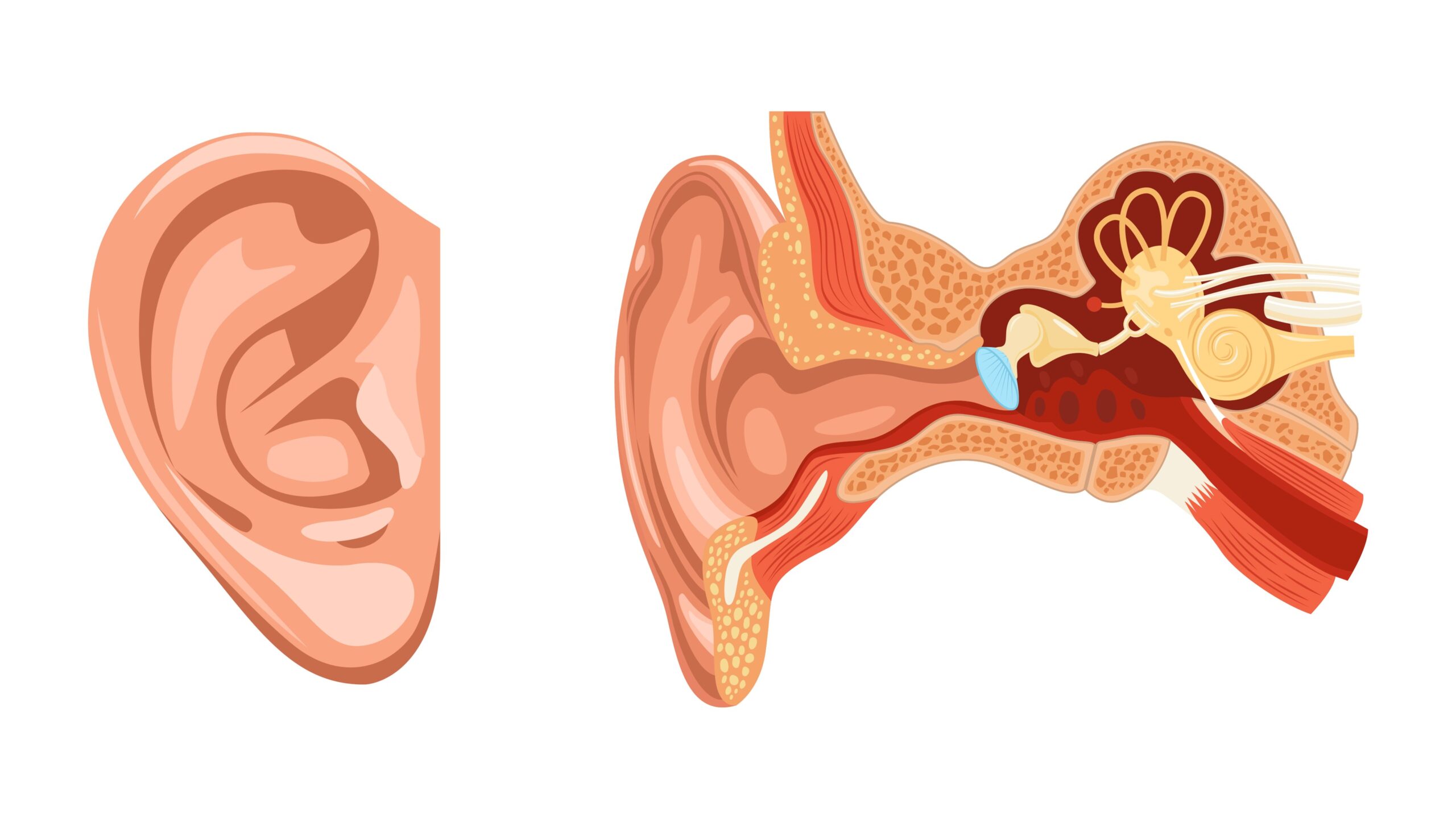The inner ear is a part of our body that helps us hear and stay balanced. It’s located deep inside our skull, near the brain. It has three main parts:
- Cochlea: The cochlea is shaped like a snail and is responsible for our sense of hearing. Inside the cochlea, there are different fluids and a special organ called the organ of Corti. When sound enters our ear, it causes vibrations that move through the fluids in the cochlea. The organ of Corti then detects these vibrations and turns them into electrical signals that our brain can understand as sound.
- Vestibule: The vestibule is like a central chamber between the cochlea and another part called the semicircular canals. It helps us with our sense of balance and tells us if we’re moving or if our head is tilted. Inside the vestibule, there are two small sacs called the utricle and saccule. They have tiny crystals inside them that move when we move, and this movement sends signals to our brain about our body position.
- Semicircular Canals: The semicircular canals are three loops filled with fluid. They are connected to the vestibule. These canals help us detect and control our balance and sense of rotation. When we move our head, the fluid inside the canals also moves. This movement is sensed by special cells in the canals, which send signals to our brain. This is how our brain knows if we’re turning, spinning, or keeping our balance.
So, the inner ear is like a complex system of fluids and tiny structures that work together to help us hear and stay balanced. When everything is working well, we can hear sounds clearly, and our body can maintain balance. Problems with the inner ear can lead to difficulties in hearing or feeling dizzy or unsteady.
Consult your doctor immediately if you notice any symptoms related to hearing loss or balance issues!


